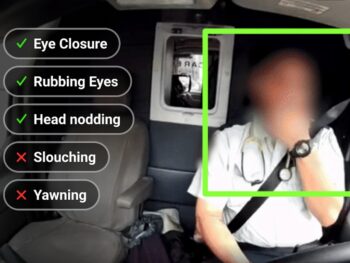Samsara’s AI-powered drowsiness detection now available globally
Samsara has introduced its Drowsiness Detection feature on general availability for customers globally.
Insights can be viewed as aggregated reports within the Samsara Platform, allowing managers to analyse patterns of fatigue across their fleet, focus on driver coaching and ultimately reduce drowsy driving to improve road safety.
While advancements in AI and machine learning have made proactive alerts possible, drowsiness remains an incredibly nuanced behaviour to train AI models to detect.
Evan Welbourne, VP of AI and data at Samsara, explained: “It’s hard to detect when someone is truly drowsy. It’s more than a single behaviour, such as yawning or having your eyes closed. Drowsiness can be less common than other risky driving behaviours, so accurate detection is only as good as the data that feeds and trains AI models.
“That’s where the scale of Samsara’s data sets our solution apart. We train our models on more than 38 billion minutes of video footage within our platform to provide high accuracy and impact for our customers.”
The Drowsiness Detection tool is trained to consider several behaviours that indicate fatigue, in alignment with leading and clinically validated standards for defining drowsiness.
These include head nodding, slouching, prolonged eye closure, yawning, rubbing eyes, and more. Yawning alone is often not a sufficient detector of drowsiness; analysis among early adopters of Samsara’s Drowsiness Detection found that approximately 77% of drowsy driving events were detected by behaviours other than yawning alone.
First announced at Samsara’s annual ‘Beyond’ conference in June, the Drowsiness Detection solution has already helped fleets crack down on tired driving. A large oilfield services company has reported a significant decrease in how often drivers are falling asleep during shifts since using the tool.


